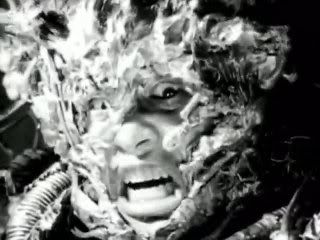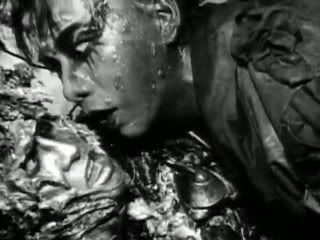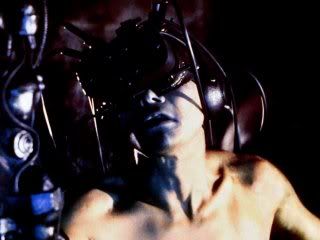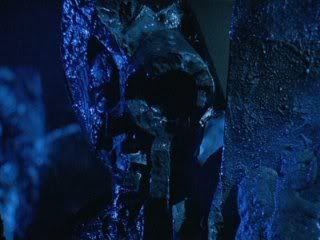Let me show you something really swift -- a new world!


Next weekend IU Cinema is having a special screening of Shinya Tsukamoto's Tetsuo: The Bullet Man, so tonight I played catch-up with the first two parts of the series. Made in 1989, Tetsuo: The Iron Man was the Tsukamoto's first feature and was practically a one-man production. Not only did he write, direct and edit the film, but he also played one of the main characters, did the art direction and was one of the cinematographers alongside Kei Fujiwara, who had her hands herself since she, too, played a major character and was the assistant director and costume designer. It seems only composer Chu Ishikawa got away with doing one job on the film, but his industrial score is so integral to its success that it may as well be pulling double duty.
I suppose it's possible to boil Tetsuo: The Iron Man down to a simple plot description, but attempting to appreciate it on that level is so far beside the point it's practically in the next prefecture. After all, this is a film that opens with a metal fetishist (Tsukamoto) painfully inserting a rod into his own leg and a salaryman (Tomorowo Taguchi) who finds a piece of metal growing out of his face. Eventually we find out just how the two are connected, but in the meantime Taguchi has a terrifying dream where he encounters a woman with a metal hand attachment (Nobu Kanaoka) and, upon waking, terrifies his girlfriend (Fujiwara) with the metal attachments that are progressively taking over his body. The whole film is like a cross between Eraserhead-era David Lynch and Videodrome-era David Cronenberg, but I doubt either one of them would have conceived of a showdown between a man covered in metal and a man who has been magnetized by a piece of metal lodged in his brain. Or maybe they would, but since Tsukamoto has already done it that means they don't have to.


Three years later, Shinya Tsukamoto got most of the gang back together to make Tetsuo II: Body Hammer, which stars Tomorowo Taguchi as a family man whose latent ability to transform himself into a weapon is triggered by the abduction of his young son. Nobu Kanaoka also returns, this time as his wife, and Tsukamoto plays the role of the main antagonist. There are a lot more supporting characters this time around (including a mad scientist and a veritable army of musclebound minions), but the film turns on the battle between Taguchi and Tsukamoto, which everyone else stays on the sidelines for. Both films are visually striking (this one credits three cinematographers), but I have to give the edge to the original for its use of black and white. I also have to commend both for the predominance of in-camera effects (including stop-motion animation), which I hope carries over to The Bullet Man. A Tetsuo film overloaded with CGI just won't be the same.